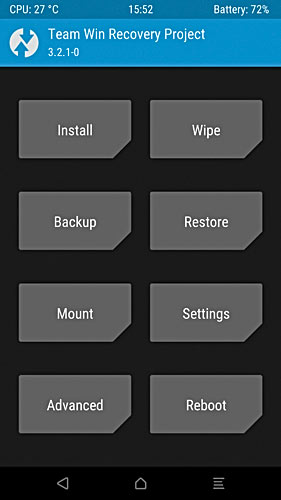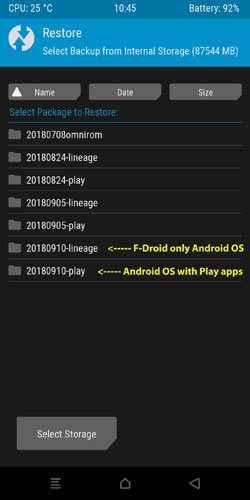A quick update, 7/8/2021: I I switched to GrapheneOS a couple of months ago, only swap the SIM card into an older, LineageOS-powered smartphone when I need to use Google services.
Vodafone knows where I am. My cellular service provider knows now, yesterday, tomorrow, whenever or wherever my smartphone-with-a-Vodafone-SIM is turned on, unless I swaddle the handset in aluminum foil. I am a trackable man.
I trade the privacy I took for granted in youth for technological tools that my youthful self never imagined. I am resigned to the trade-off, but don’t want to sacrifice more than I must. Vodafone has to track me. Google doesn’t. Most app makers don’t.

Hence, the measures described in this post. I modified my smartphone to install a hybrid version of the Android operating system, and populated said hybrid with apps acquired from F-Droid, an alternative to Google Play. I am no longer signed in to Google when the móvil is on; Google no longer tracks my every planetary step as I shop, stroll, panhandle, battle other retirees for the remote control at the seniors center. Most F-Droid apps install without requesting any special permissions; they don’t snoop on me, either.
This set-up respects my privacy, but is relatively feeble; I hobble along without powerful household name apps that most install through Google Play. Fortunately, modding permits me the best of both worlds: when I need it, I can quickly restore a separate copy of the Android OS that includes a Google sign-in, and full access to Play apps. I do what I need to do with these apps while Big Brother’d, then restore the F-Droid set-up to regain my privacy.
Swapping between F-Droid and Play Store versions is more troublesome than an OS swap on a “dual boot” PC, but still takes less than five minutes, and can be done anywhere — in the gym, bus, coffee shop, in the casket before the lid closes — without a computer.

Might there be a ‘catch,’ wonder you?
Yes, unfortunately. ‘Catches,’ plural. Big ones.
(♦) Everything about this process is messier, riskier and murkier than the “install Linux” post of 2016. Many Android handsets can’t be modded, at least not by amateurs. The remainder are modded with device-specific steps, and you will be very lucky to find a write-up that is merely inadequate, that would pull an irritable ‘D’ from a sleepy prof in a J.C. comp class. If you are less lucky, you will have to dumpster dive for tips in online fora peopled by teenie modders with Guy-Hawkes-in-a-hoodie avatars, and deduce meaning from comments like U STOOP Y U NO ADB TWRP FLASH MY ROM DUHHHHH.
Credible expertise is rare, elusive (and certainly won’t be found here); online sages often disagree about what can and can’t be done successfully. The Android modder machete-slashes a grim path through hostile wilderness.
(♦) I haven’t finished trying to scare you away. Rotten docs sabotage modding efforts; you may fail, brick the phone, render it unusable. F-Droid apps are updated less frequently than apps from Google Play; I regard them as less secure, perhaps unfairly. Your modded phone may not run Android Pay. (Although online wags disagree about this, too.) If you replace the phone’s Android variant with one of your own choosing, it may more poorly control the smartphone’s camera.
(♦) I have never owned an iPhone, can offer no tips. Sorry.
(♦) You may choose to care less about privacy matters, for reasons to be described at write-up end.
On to nuts and bolts. I again judge gory details to be too dull and geeky to be included inline, and banish them to a separate .pdf:
https://transitophile.com/chango/files/modifying_android_handset.pdf